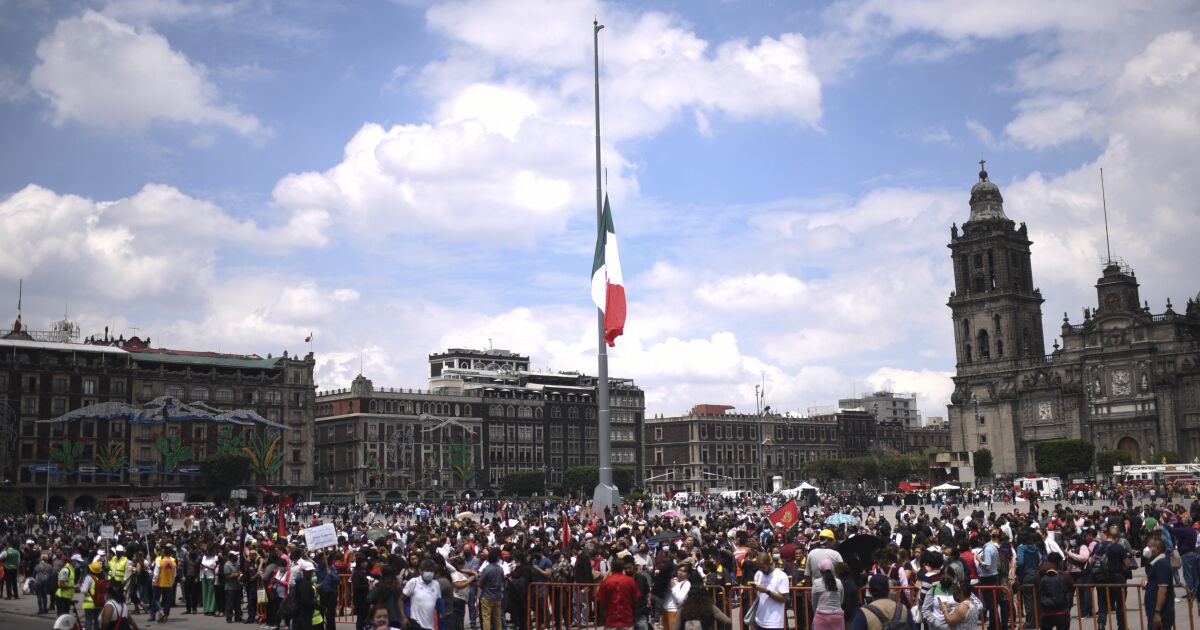Hurricane Fiona left Puerto Rico without electricity on Sunday after unloading torrential rains that caused serious material damage in several areas of the Caribbean island, before making landfall on Monday in the Dominican Republic.
“The eye of Hurricane Fiona made landfall on the coast of the Dominican Republic near Boca de Yuma at 03:30 (07:30 GMT)” with winds estimated at 150 km / h, the United States National Hurricane Center (NHC) said on Twitter. .
The Dominican Republic suspended the working day on Monday and declared 13 of its 32 provinces, located in the north and east of the country, on red alert.
The hurricane is a category 1, the lowest of five on the Saffir-Simpson scale, but it is expected to “strengthen further in the next 48 hours,” the NHC said.
The storm caused a general blackout in Puerto Rico from shortly after 1:00 p.m. (5:00 p.m. GMT) on Sunday, reported the Puerto Rico Electric Power Authority, the public company in charge of electricity generation.
That entity managed to restart several generators, a first step towards reestablishing the electrical network, said its director, Josué Colón, in a television interview.
overflowing rivers
“The damage we are seeing is catastrophic in several areas,” Puerto Rico Governor Pedro Pierluisi said at a press conference on Sunday.
The authorities reported serious damage in many towns in this US territory, such as falling trees and power lines, landslides, landslides, road obstructions.
In Utuado, a town in the center of the island, the flooding of a river swept away a bridge, Pierluisi said.
An inhabitant of that city, Fernando Vera, was concerned about the future in statements to US radio NPR and recalled Hurricane Maria, which devastated Puerto Rico almost five years ago.
“We’re still struggling with the aftermath of Maria and it’s kind of hard to know that we’re probably going to have to start over,” he said.
According to local media, several rivers overflowed their banks in the southeast of the island, flooding roads and urban areas; and in the mountains and the southwestern area, several families lost the roof of their houses due to gusts of wind and had to take shelter in shelters authorized by the government.
The hurricane left some 196,000 people without drinking water due to blackouts and flooding of rivers, officials said.
Pierluisi announced the suspension of classes in schools on Monday, due to forecasts that the rains will continue.
It also canceled the work of government employees, except those who occupy critical positions or provide essential services during the emergency.
US President Joe Biden, for his part, approved the declaration of a state of emergency in Puerto Rico, a measure that allows federal funds to be released for relief efforts.
“Catastrophic Levels”
“The conditions are going to be very favorable for these downpours to continue rising from the Caribbean Sea to historic levels, to catastrophic levels,” said Ernesto Morales, from the national weather service, at the same press conference as the governor.
Authorities anticipate 762 mm of rain in two days, since heavy rains are also expected on Monday, Morales said.
During Hurricane Maria, which caused nearly 3,000 deaths in Puerto Rico in 2017, the island was cut off from communication and large areas were without power for months.
Fiona already caused serious damage as she passed through Guadeloupe on Friday night. In some places, the water rose to more than 1.50 meters in that French territory, where a man died dragged with his house by the flood of a river.
The warming of the ocean surface increases the frequency of the most virulent hurricanes, with stronger winds and more intense rains, according to experts.


